Once Europe’s greatest port city and the world’s first international financial center, Venice is composed of 126 islands within a shallow lagoon connected by 472 bridges. Today, the city's impressive palazzos stand as enduring symbols of the wealth amassed through trade in medieval Venice. I believe there is nothing more exquisite than staying in a Venetian palazzo. It means you’ve made it. Not financially or societally, but culturally. A couple of caveats: a good palazzo is hard to find — but that’s where I come in. And sadly, this historical marvel is sinking, so time is of the essence.
Modernizing a kitchen or bedroom on the island of Venice feels like sacrilege. Don’t patch the peeling plaster. Skip the modern lighting. Leave everything as it was and let us in—so we can hurl our phones straight out the window, watching them soar like projectiles into the canal. Upon hearing that sweet plunk, we will feel free and light, ready to head out and indulge in a plethora of cicchetti (Venetian snacks served at wine bars), accompanied by at least three spritzes. Farewell, modernity—we never liked you anyway.
A brief aside on the spritz: originally called the Venetian Spritz before dropping “Venetian” in a brilliant rebranding move— it was created for soldiers of the Austrian Habsburg Empire. Finding the local Malvasia wine too strong, they requested a “spritz” of soda to dilute it. (Spritzen is German for “to splash.”) Later, bitters were added to enhance the cocktail’s flavor. The original local brand of bitters was Select, though today, Aperol or Campari are more commonly associated with infusing the drink and quite literally painting the town red.
To me, a Venetian experience begins when disembarking from a train at Stazione Santa Lucia, sprinting to the steps of the piazza, and diving headfirst into the whirlwind of tourists, vendors, and masked revelers. In my younger days, a vaporetto took me wherever I needed to go. Later, I was lucky enough to be swept away in a golden dress by an elegant Venetian captain, whisked to a party with a flute of champagne in hand, the water eagerly lapping against the boat’s wooden hull, and the palazzos of Venice towering around me like the steep walls of an ancient Gothic canyon.
Castello
The palazzos of Venice, built for wealthy and powerful merchants, required ingenious engineering and craftsmanship to ensure their longevity. Constructed on alluvial mud deposited by rivers, Venice needed countless timber piles driven deep into the mud to support its foundations.
Our first dwelling, located in the noble neighborhood of Castello, retains many characteristic elements of local construction. Let’s start with the walls, finished in Venetian plaster, or marmorino, a blend of limestone, fine marble, and white sand. Popular in Renaissance Venice some 500 years ago, this wall treatment was once a mark of prestige in the homes of affluent Italian aristocrats. Its antibacterial and waterproof properties are an added bonus, especially in this perpetually damp city.
The elegantly outfitted living room leads us to a staircase ascending to literal heaven: the apartment’s crown jewel, a terrace—the fifth highest in all of Venice! From here, you can enjoy an unobstructed view of rooftops, church spires, and bridges, offering a breathtaking panorama of the city.
Ca’ dei Dalmati
In Venice, distances are measured by the number of bridges you need to cross to reach your destination. This sublime palazzo is just three bridges from Piazza San Marco and two bridges from Via Garibaldi, a lively street lined with bars and restaurants.
The apartment boasts three spacious bedrooms, each with an en-suite bathroom and a beautifully decorated living room overlooking a quaint canal. Its many Venetian design details are sure to leave any design enthusiast drooling. Let’s pause to admire the terrazzo floors—my personal favorite. Modern terrazzo was developed in Venice 500 years ago. Unlike pretentious and impractical mosaic floors, these resourceful masterpieces are crafted from discarded marble chips embedded in a concrete mix, then polished to a smooth finish. Originally used for terraces (hence the name), terrazzo floors became both a durable and decorative staple of Italian homes, thanks to the skill and ingenuity of artisans.
Ponte Minich
Heavy curtains. Velvet. The dusty scent of rose petals. Creaking floorboards. Silver teapots. Ornate beds. Stucco walls. Towering windows frame the balancing act of gondoliers. Outside, laundry is stretched between buildings, drying in the sun.
This 14th-century palazzo, once the residence of Doge Alvise Pisani, feels frozen in time, adorned with period furnishings set against soaring rooms and trefoil-arched windows. These arches, characteristic of 14th-century Venetian Gothic architecture, blend Byzantine influences from Constantinople, Moorish elements from Spain, and early Gothic forms from the Italian mainland.
Situated at a canal corner with private bridge access, the palazzo rises four stories high—reflecting the vertical construction trend of the era, driven by limited space. Unlike other European palaces, Venetian palazzos feature larger-than-average front windows, maximizing sunlight from the facade with a view to the heavens.
If you’re in the mood for a new project, the entire palace is also for sale.
Campo San Barbara
I can hear the seagulls, I can feel the breeze—this palazzo calls my name! With another stunning terrace perched perhaps a bit precariously on its roof, I can already picture the spectacle of Venice’s fading light from this vantage point.
Downstairs, flat ceilings are supported by timber beams, preferred in Venice over vaulted ceilings to avoid cracking as the building settled over time into its muddy foundations. The floors, once again, are sleek terrazzo—perfect for sliding around in your socks as you dash through your elegant quarters in search of the missing piece of your carnival attire.
Dorsoduro
When I was little, during a visit to Venice, my dad took us for coffee and hot chocolate in Piazza San Marco. The waiters, dressed in crisp, tailored white jackets, served us with grace and care—before presenting a bill that reflected the full weight of the experience. I had never seen hot chocolate so expensive, but when I turned to my dad, expecting shock, he simply said, “We’re paying for the atmosphere, the view, and the magic.”
This stunning palazzo features an outdoor patio with private canal access through a charming gate, connecting you to all of Venice. While it may be a bit pricier than my usual recommendations here on Frolic Log, I strongly encourage you to take my dad’s advice to heart. Some things are worth the splurge.
I may have found my true calling in the history of Venetian architecture.
Thank you for reading - see you next week.

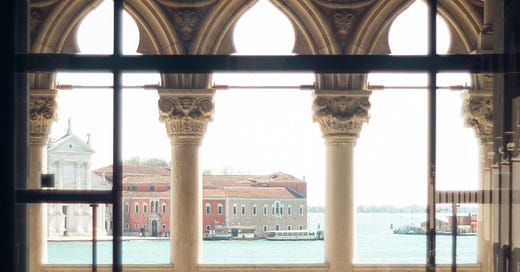

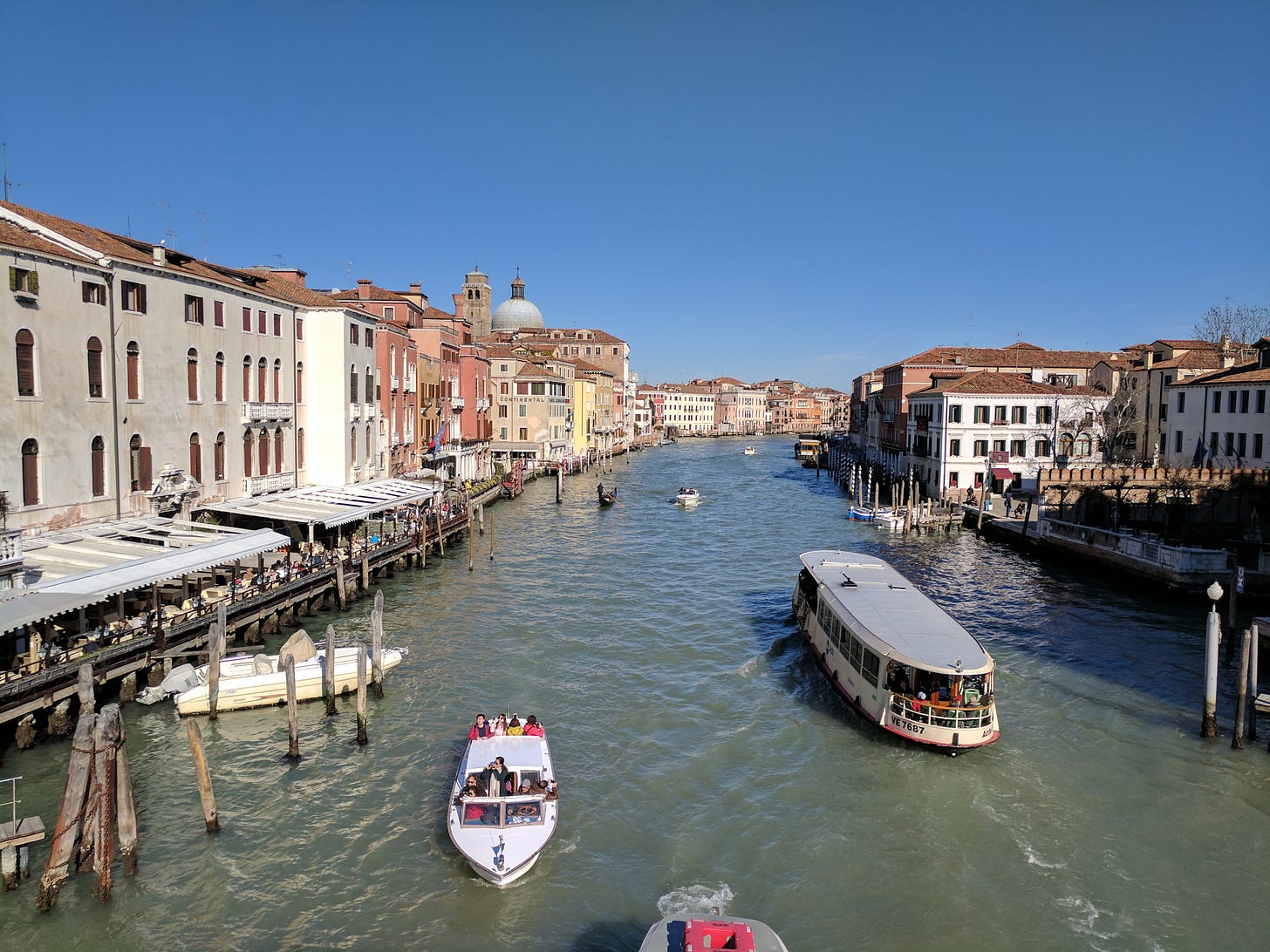



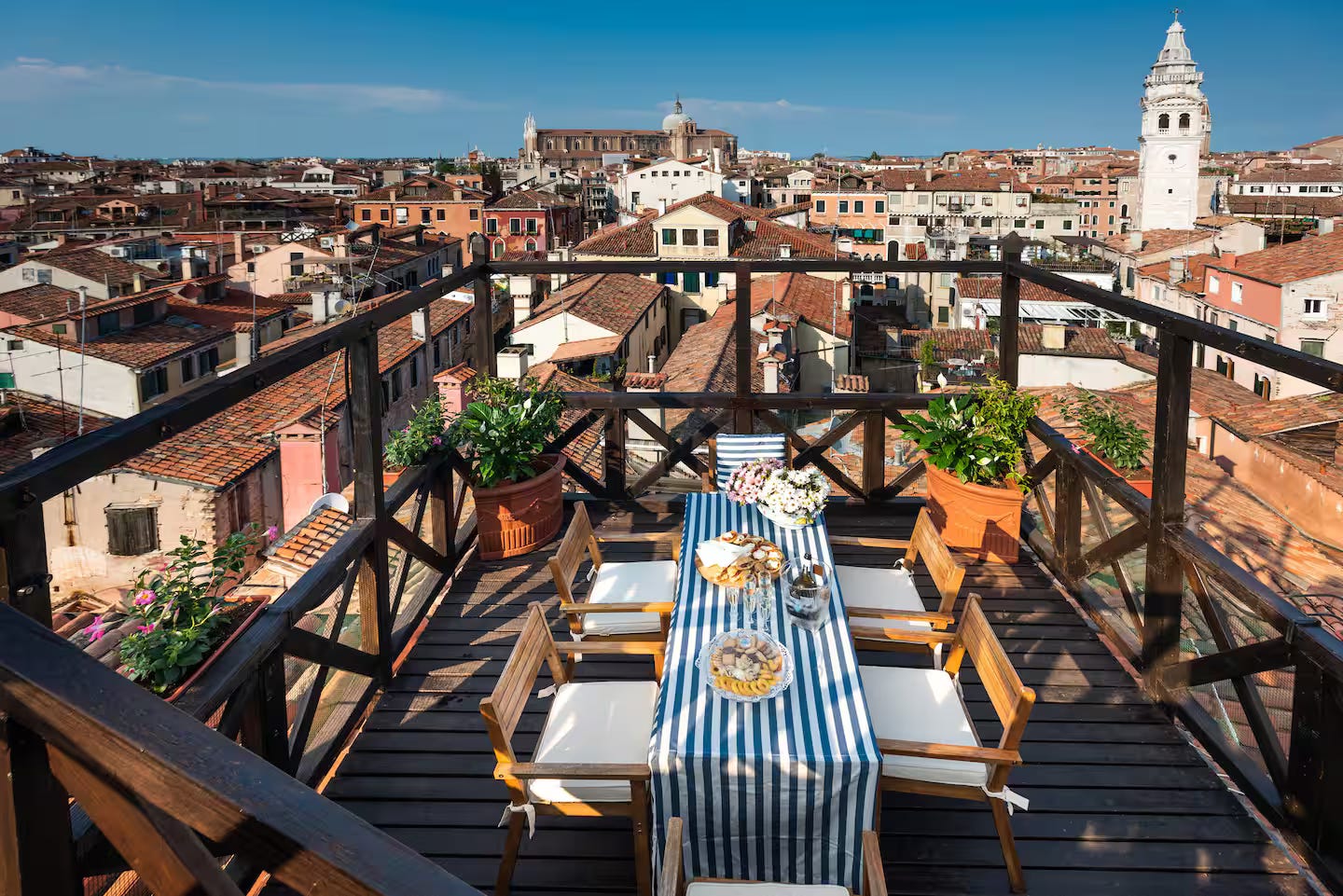
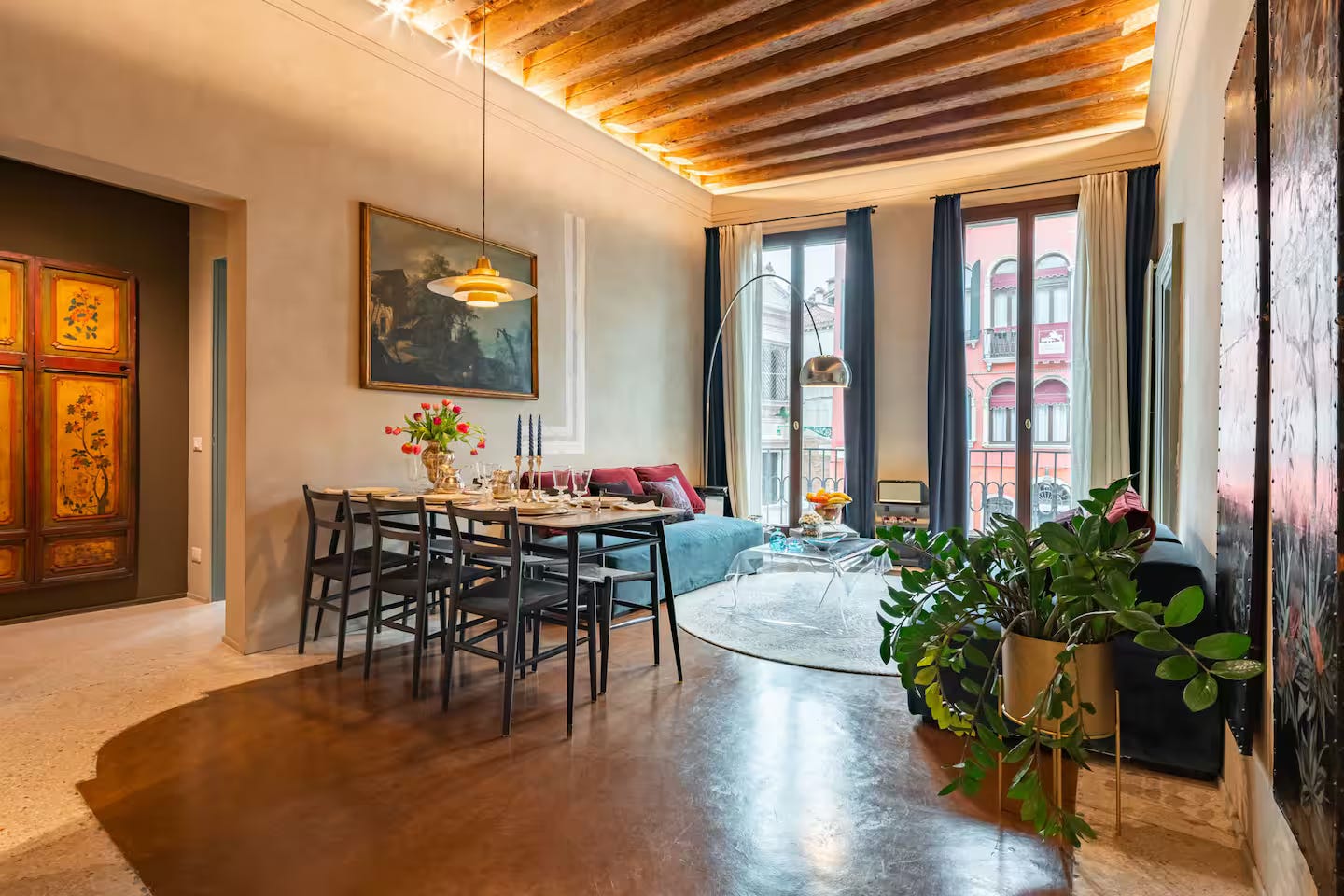
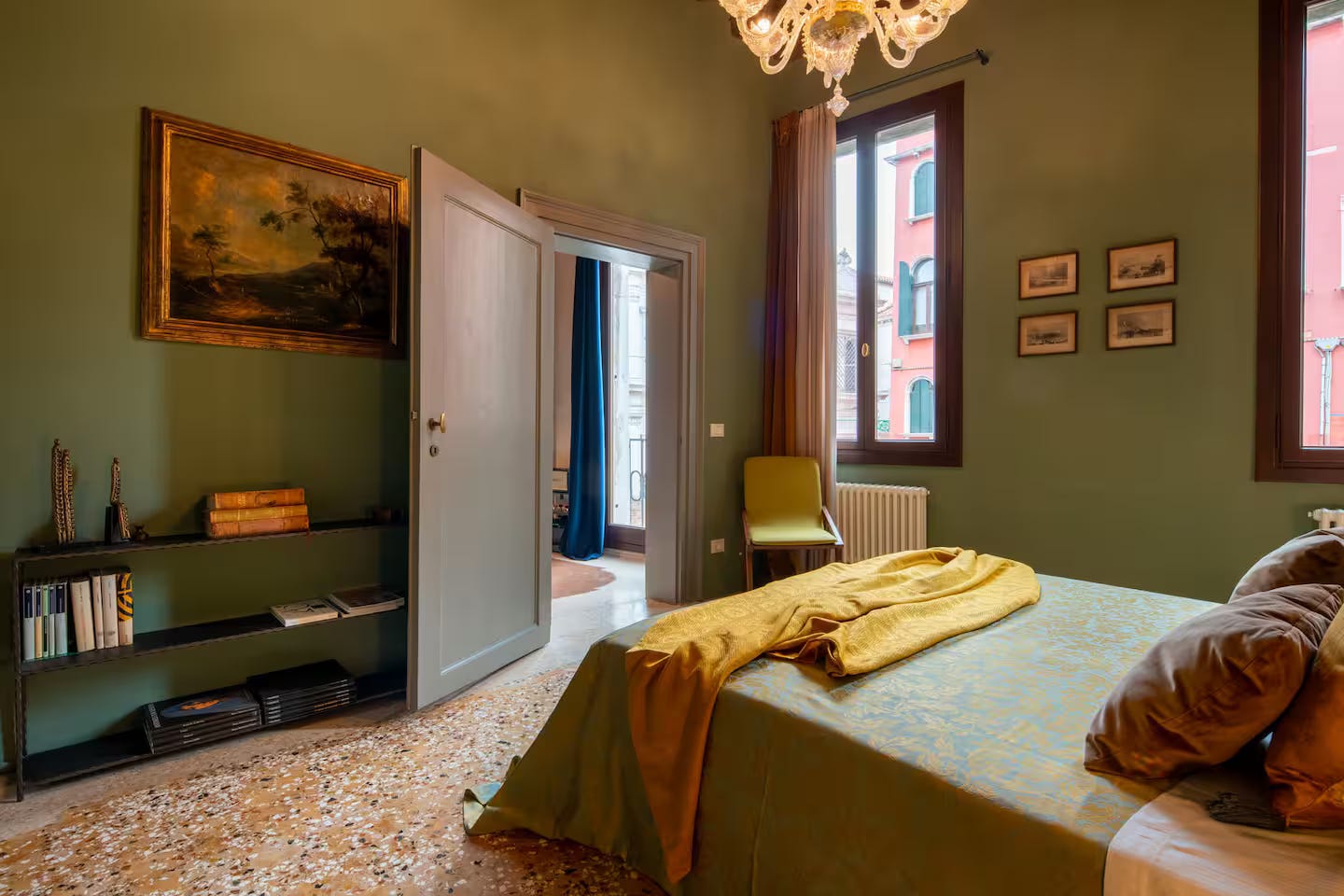
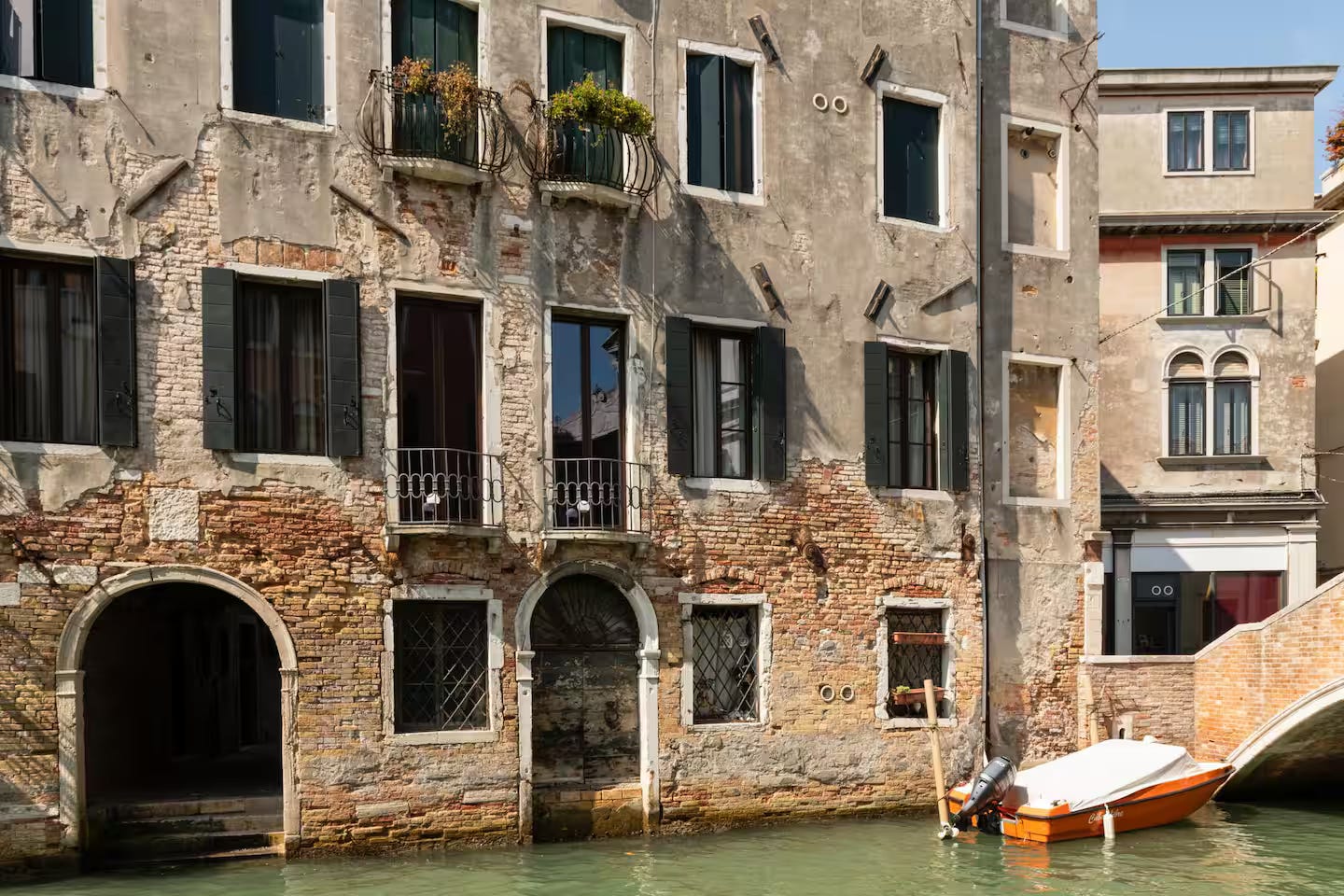

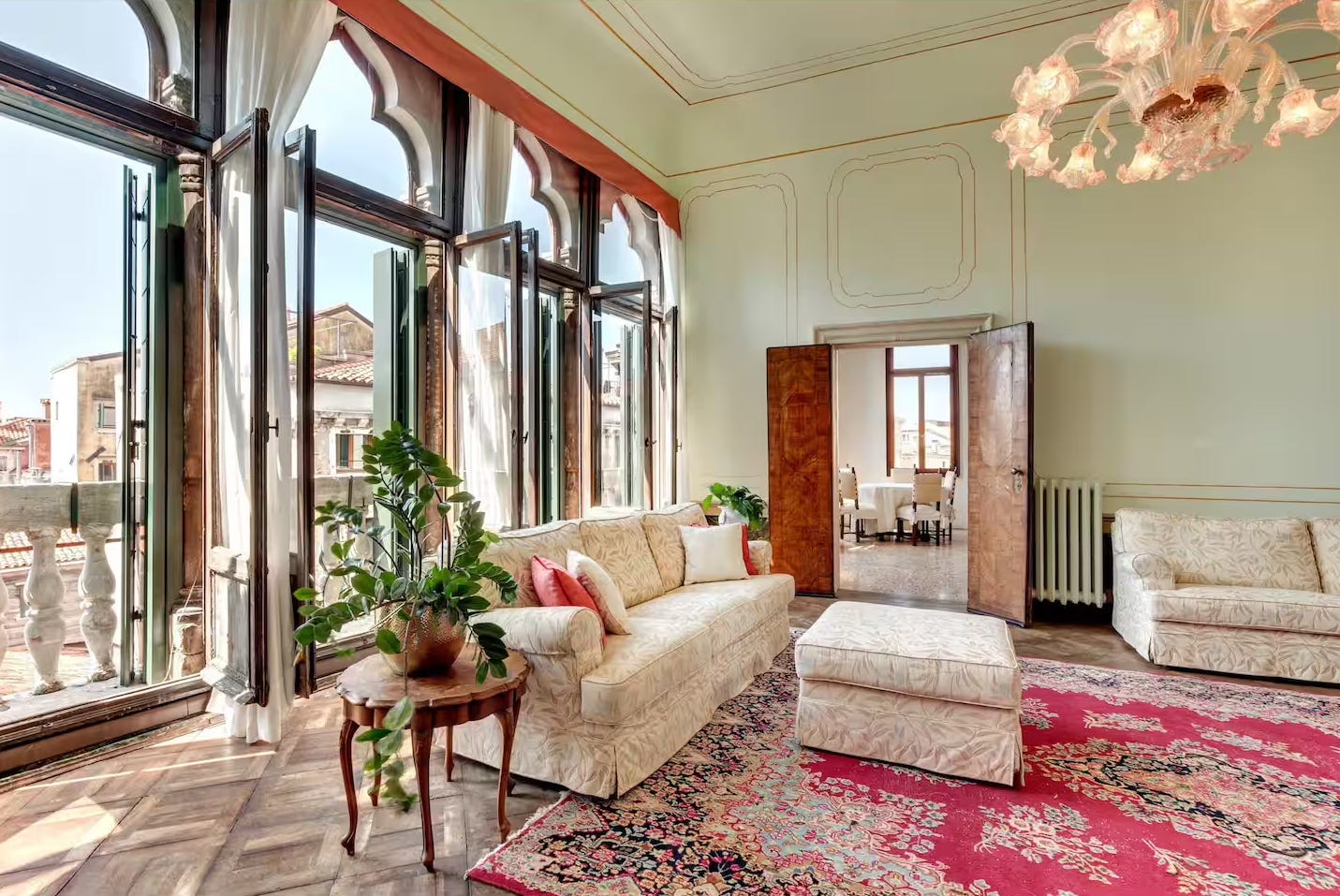
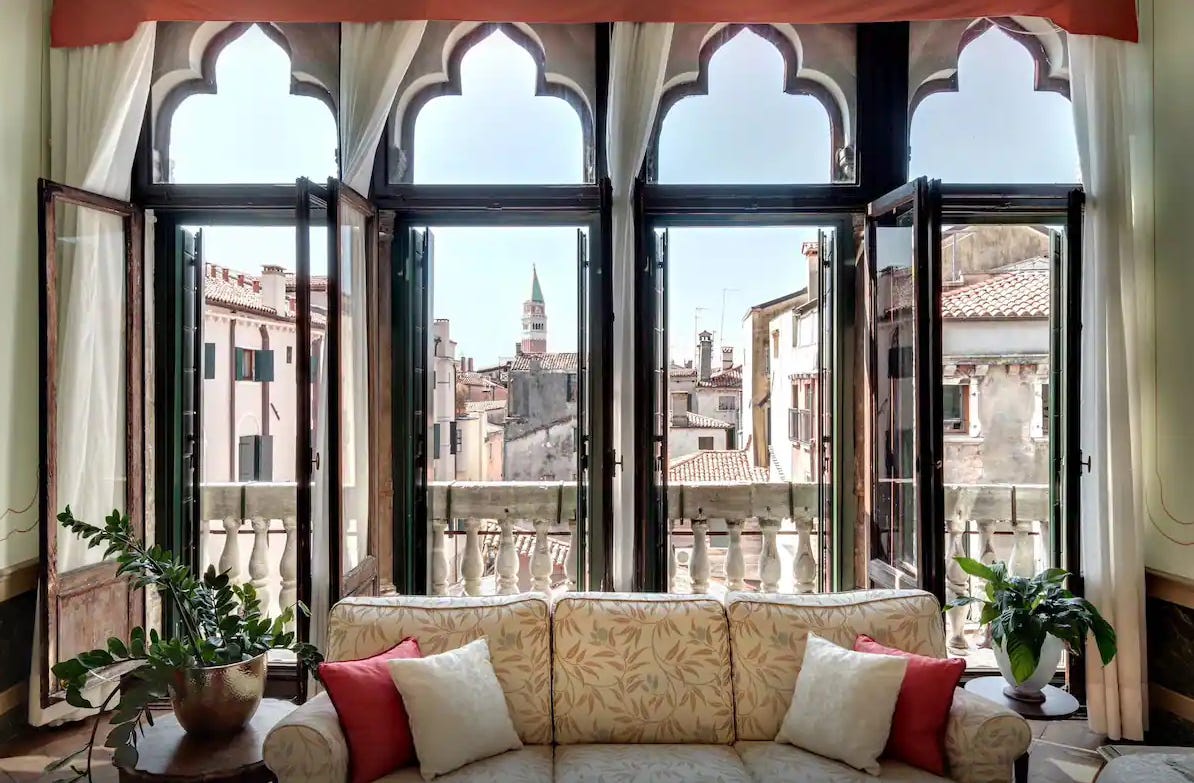
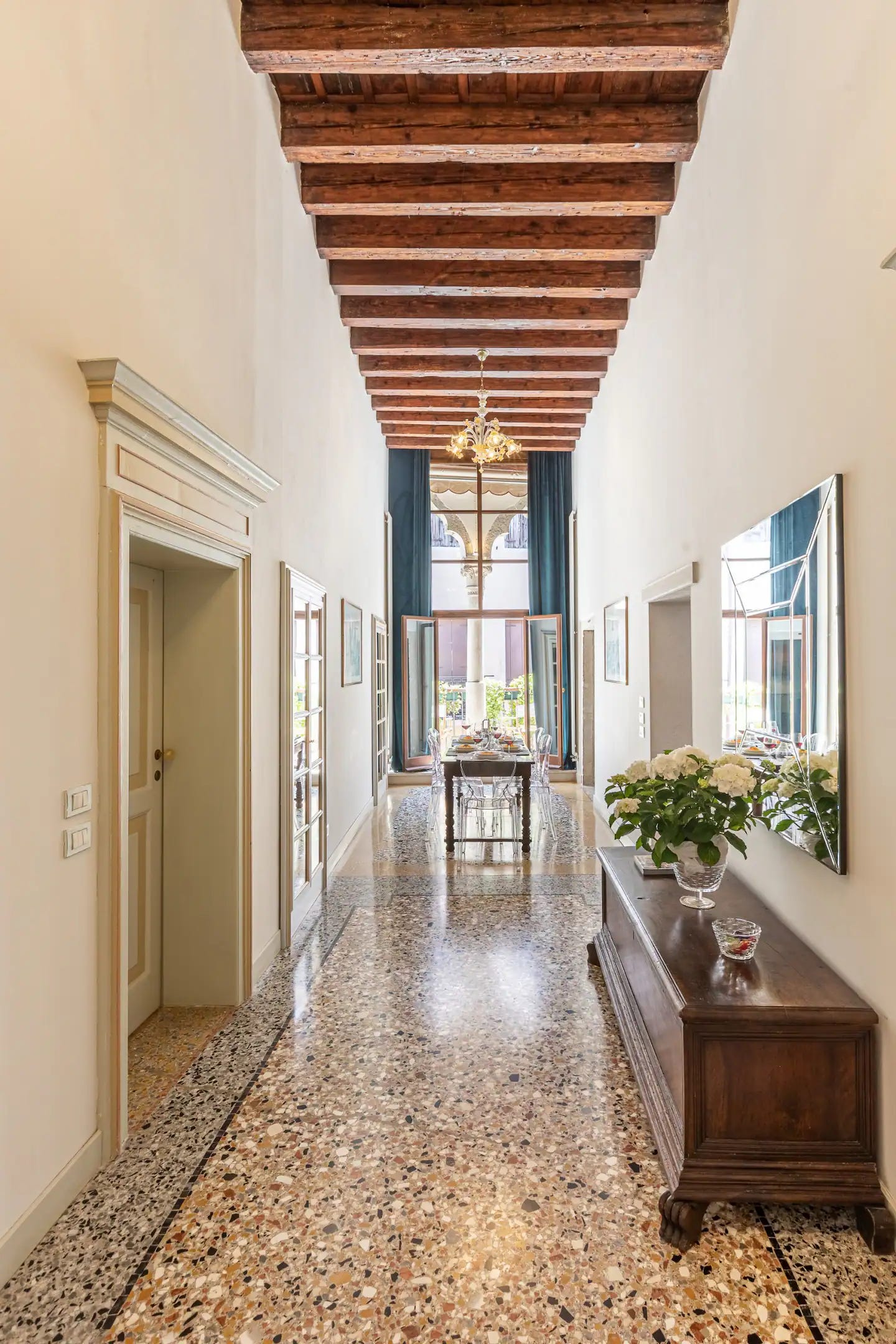
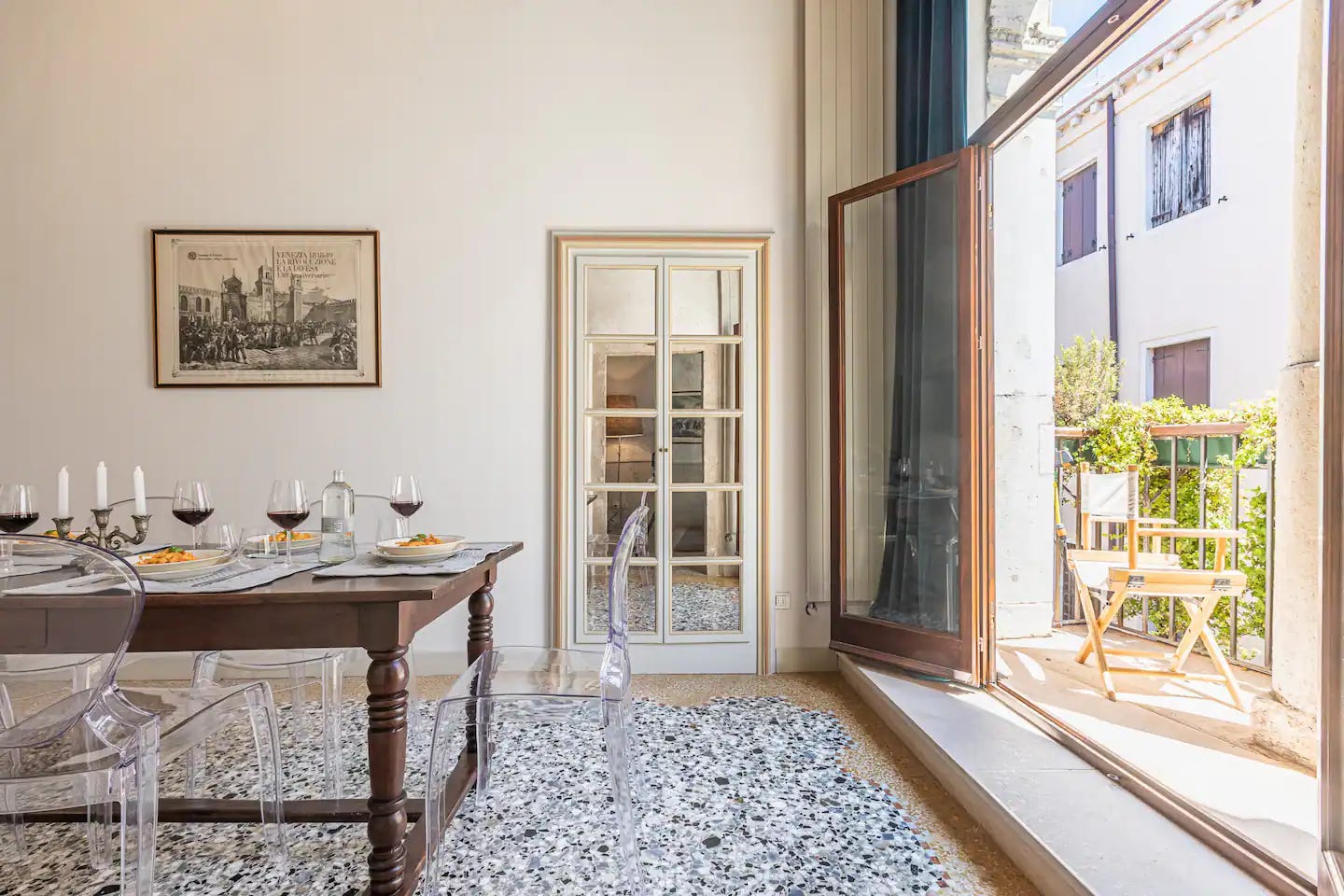
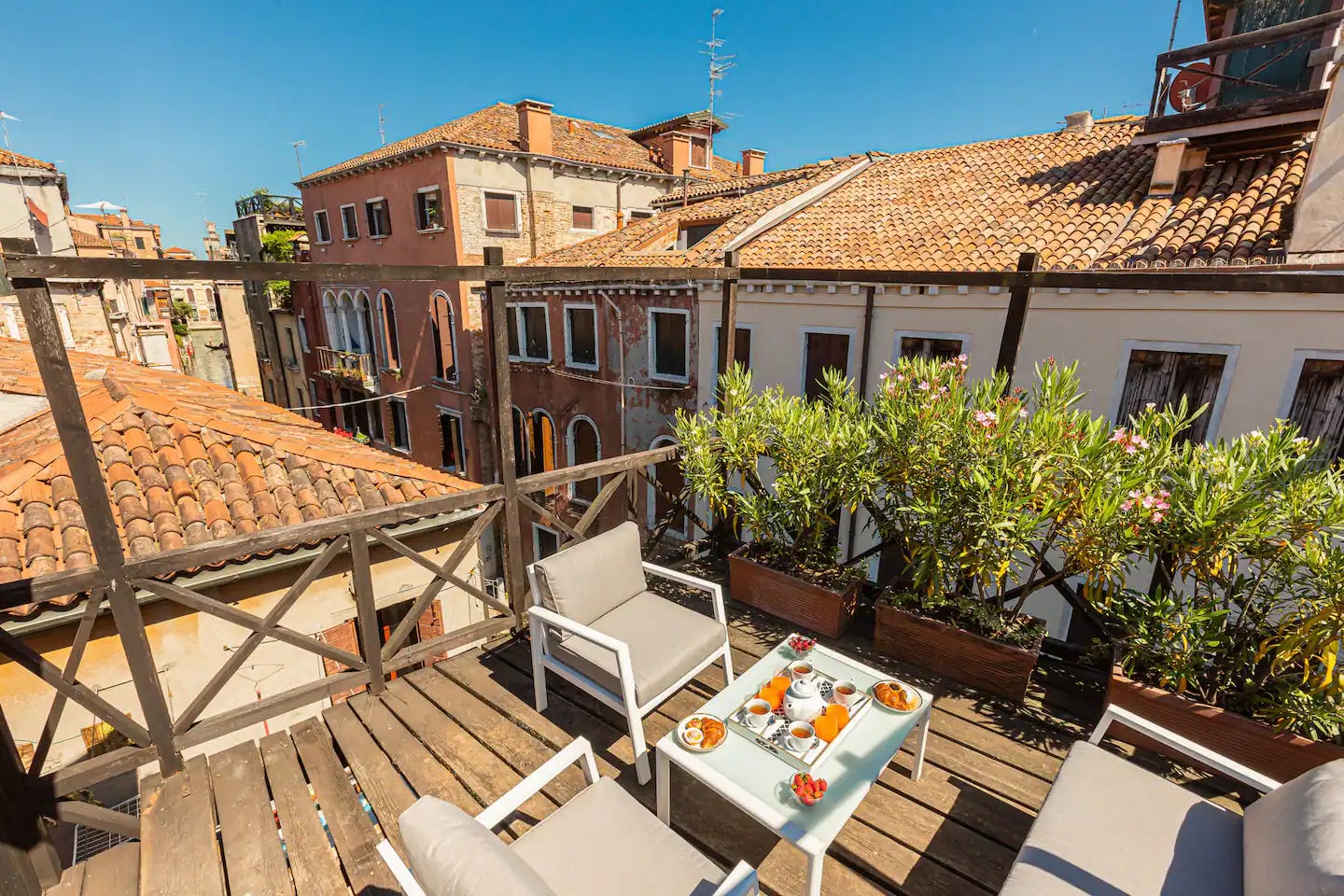
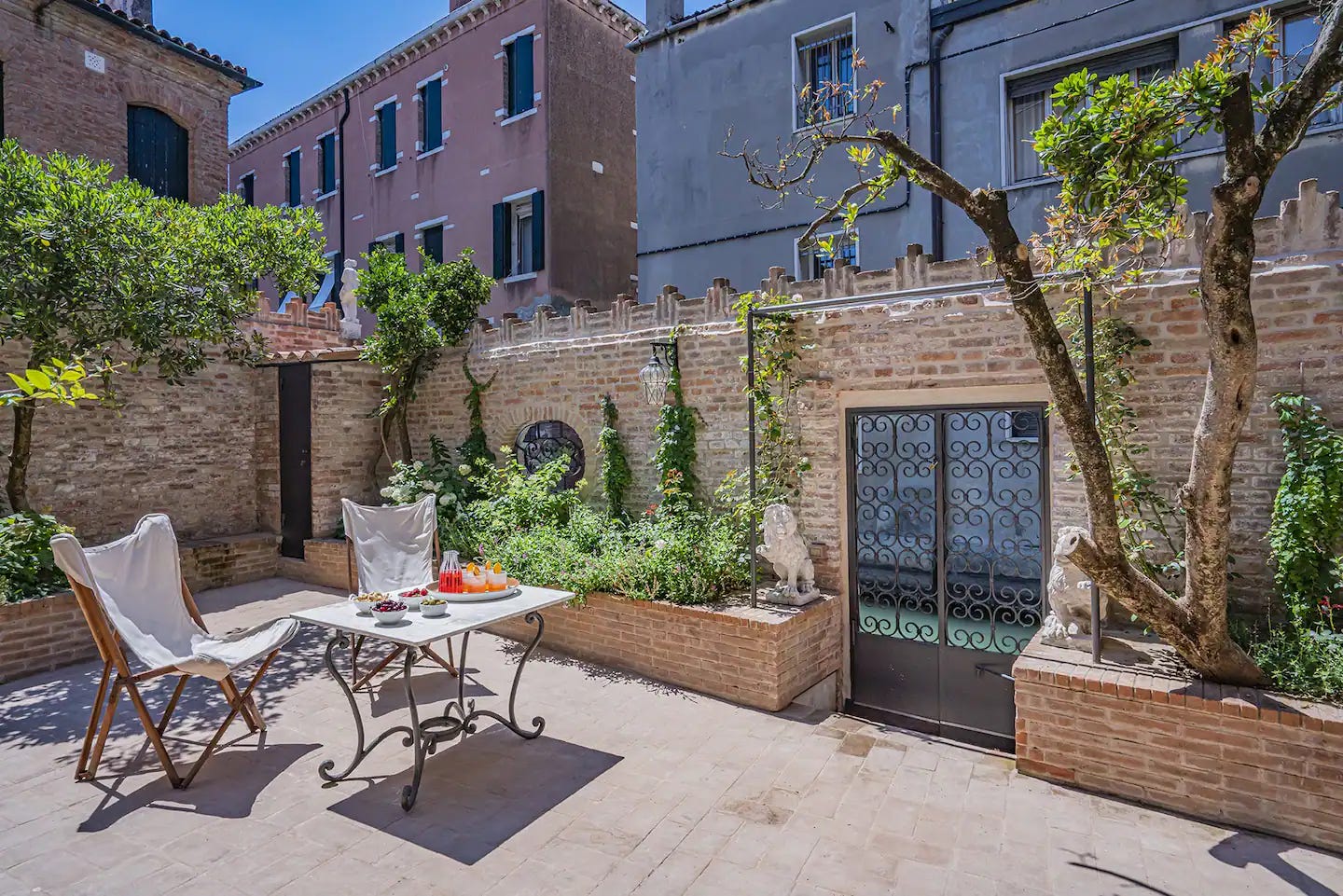


Beautiful